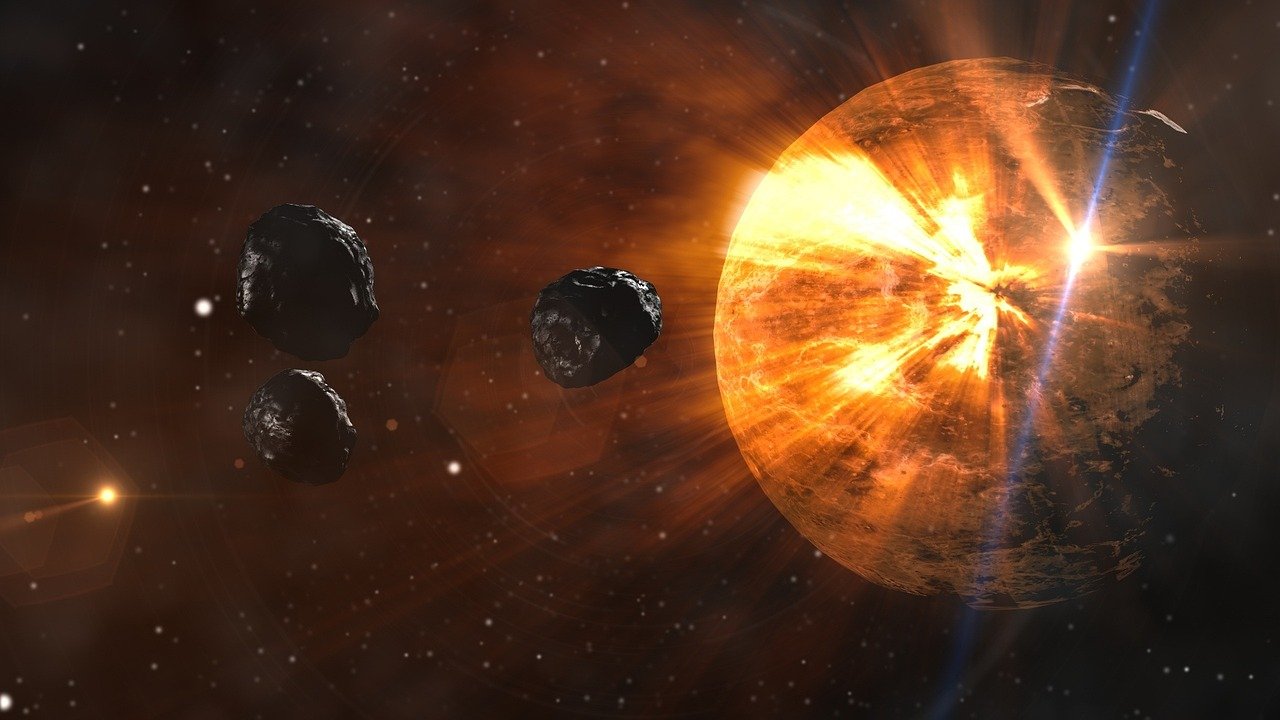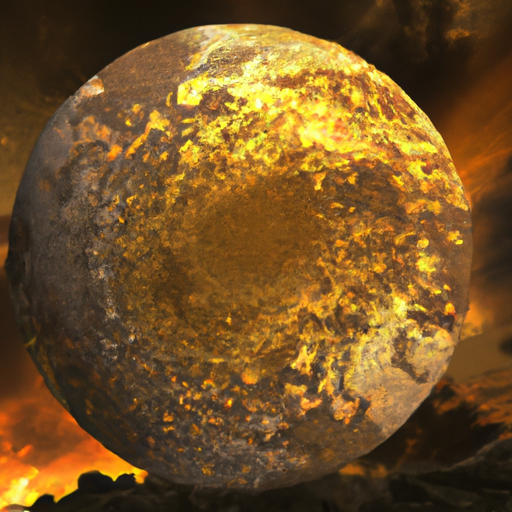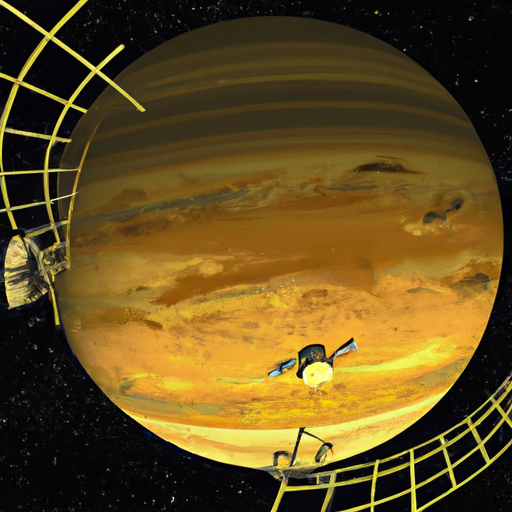Just imagine gazing up at the night sky and spotting a shimmering, bright object that captures your attention. That object is Venus, the second planet from the Sun and the brightest natural object in the night sky after the Moon. Throughout history, Venus has fascinated civilizations around the world, with ancient beliefs and modern discoveries shedding light on its secrets. From ancient civilizations worshipping Venus as a powerful deity to modern space missions unraveling its mysteries, join us on a captivating journey through time to explore the intriguing story of Venus.
Venus through Ancient Beliefs
Ancient cultures’ fascination with Venus
Throughout history, the captivating beauty of Venus has both delighted and intrigued cultures around the world. Ancient civilizations observed its luminous presence in the sky and formed various beliefs and interpretations about this celestial body. From the Mesopotamians to the Mayans, Venus played a central role in their cosmologies and belief systems.
Venus as a deity in different civilizations
In many ancient civilizations, Venus was regarded as a deity and held immense religious significance. The Babylonians associated Venus with the goddess Ishtar, the embodiment of love, beauty, and fertility. Similarly, in Greek mythology, Venus was known as Aphrodite, the goddess of love, desire, and procreation. The Romans later adopted this interpretation, venerating Venus as their goddess of love and beauty.
Venus in mythology and religious beliefs
As a prominent celestial figure, Venus became closely intertwined with various mythologies. In Greek mythology, Venus was born from the sea and emerged fully grown and beautiful, symbolizing her power and allure. She was often depicted accompanied by cherubs or doves, further emphasizing her role as the goddess of love and beauty. In religious beliefs, Venus was associated with both transformative love and the cycles of life and death, reflecting the dual nature inherent in her mythology.
Early Observations of Venus
Early records of Venus observations
As early as the Mesopotamian era, civilizations began recording their observations of Venus. Clay tablets dating back to the 2nd millennium BCE contain detailed records of its movements across the night sky. Notable ancient astronomers, such as the Greeks and the Mayans, also closely monitored Venus.
The significance of Venus in ancient astronomy
Venus held significant importance in ancient astronomy as it was one of the brightest celestial bodies visible to the naked eye. It played a crucial role in determining the calendar systems of many civilizations, including the Mayan Long Count Calendar. These early astronomers meticulously recorded Venus’s movements and used them to predict celestial events, agricultural cycles, and religious ceremonies.
Notable astronomers and their observations of Venus
Throughout history, numerous astronomers made remarkable observations about Venus. The ancient Greek astronomer Claudius Ptolemy documented the intricate movements of Venus in his influential work, the Almagest. Tycho Brahe, a Danish astronomer from the late 16th century, meticulously recorded Venus’s positions and discovered the phenomenon known as the transit of Venus. These discoveries propelled the understanding of Venus’s role in the solar system.

Venus in Renaissance Art
Artist’s portrayal of Venus in Renaissance art
The Renaissance era witnessed a resurgence of interest in classical mythology, and Venus captivated the imaginations of artists during this period. Countless paintings and sculptures portrayed Venus as the epitome of beauty, often depicted in sensual and graceful poses. Artists such as Sandro Botticelli, Titian, and Diego Velázquez created iconic masterpieces featuring Venus as the central subject of the artwork.
Symbolism and meaning behind Venus in art
In Renaissance art, Venus was often imbued with symbolism beyond her divine beauty. She stood as an allegory for love, desire, and femininity. The portrayal of Venus served as a reflection of societal values and ideals during this cultural rebirth. Artists carefully incorporated details such as celestial symbols, mythological motifs, and idealized landscapes to convey a deeper meaning and capture the essence of Venus.
Influence of Venus on Renaissance society
Venus’s representation in Renaissance art had a profound impact on society. The artistic ideals and depictions of beauty portrayed by Venus influenced societal norms and perceptions of femininity and love. Venus became an icon of beauty, grace, and desire, setting the standard for aesthetics during the Renaissance period. Additionally, Venus’s mythological associations encouraged a renewed interest in classical texts and ideas, fueling intellectual pursuits and cultural advancements.
Venus Exploration in the Space Age
Pioneering missions to Venus
The Space Age brought about a new era of exploration, and Venus became a target of scientific curiosity. The Soviet Union’s Venera program spearheaded the first missions to Venus in the 1960s, sending unmanned spacecraft to study the planet’s atmosphere and surface. These missions marked the beginning of humanity’s direct exploration of Venus, providing valuable insights into its mysterious composition.
Spacecraft and technology used in Venus exploration
Exploring Venus presented immense challenges due to its harsh environment. Spacecraft designed for Venus missions required robust heat and pressure-resistant materials to withstand the extreme conditions. Probes like the Venera and Pioneer Venus missions utilized advanced technologies such as radar systems, spectrometers, cameras, and atmospheric entry modules to gather data about Venus’s atmosphere, geology, and climate.
Key discoveries and findings from Venus missions
Venus missions have yielded significant discoveries about the planet’s atmosphere and surface. They revealed the dense atmosphere composed of carbon dioxide and the presence of sulfuric acid clouds that enshroud the planet. These missions also uncovered evidence of past volcanic activity, providing insights into the geology of Venus. Additionally, measurements from various spacecraft have contributed to our understanding of Venus’s extreme greenhouse effect and its role in the planet’s high surface temperatures.

Venus’s Atmospheric Composition
Characteristics of Venus’s atmosphere
Venus’s atmosphere is predominantly composed of carbon dioxide, making it primarily a greenhouse gas. The dense atmosphere creates a significant greenhouse effect, trapping heat and resulting in scorching surface temperatures that can exceed 900 degrees Fahrenheit (475 degrees Celsius). Additionally, Venus’s atmosphere is marked by thick layers of clouds composed of sulfuric acid, contributing to its highly corrosive and hostile environment.
Extreme greenhouse effect and runaway temperature
The extreme greenhouse effect on Venus is a consequence of the planet’s dense atmosphere and the abundance of carbon dioxide. Incoming sunlight is absorbed by the planet’s surface and re-radiated as heat, which becomes trapped by the thick atmosphere. This runaway greenhouse effect leads to a cycle of increasing temperatures, further amplifying the greenhouse effect and creating a perpetually hot and inhospitable environment.
Composition and layers of Venus’s atmosphere
Venus’s atmosphere consists primarily of carbon dioxide (approximately 96%) and small amounts of nitrogen (around 3.5%). The sulfuric acid clouds that envelop the planet are found in multiple layers, creating a complex atmospheric structure. These clouds reflect a significant amount of sunlight back into space, contributing to the planet’s exceptionally high albedo, or reflectivity.
Venus’s Volcanism and Geology
Evidence of past and present volcanic activity on Venus
Venus’s surface is marked by evidence of extensive volcanic activity both in the past and potentially ongoing. The presence of vast volcanic plains, volcanic domes, and lava channels indicates that Venus was once a geologically active planet. The Magellan spacecraft, equipped with advanced radar systems, provided detailed images of volcanic features, revealing a geologically diverse landscape sculpted by ancient volcanic processes.
Comparison with Earth’s geological processes
Despite important similarities, Venus’s volcanic activity differs significantly from that of Earth. Venus lacks tectonic plate boundaries like Earth’s, which results in a different style of volcanic eruptions. The absence of plate tectonics on Venus allows for fewer pathways for heat to escape, leading to the buildup of internal heat and potentially leading to Venus’s intense surface temperatures.
Geological features and landmarks on Venus
Venus’s geological features exhibit a range of formations, including vast lava plains, shield volcanoes, and impact craters. The planet’s highest peak, Maxwell Montes, stands as a towering volcanic complex, while the Atla Regio region showcases a network of rift valleys and mountainous terrain. The striking geological structures on Venus provide valuable insights into its volcanic past and help scientists unravel its mysterious geological history.

Venus’s Unique Rotation and Orbital Characteristics
Venus’s slow and retrograde rotation
One of Venus’s most intriguing characteristics is its slow and retrograde rotation. Unlike other planets in the solar system that rotate from west to east, Venus rotates in the opposite direction, akin to its orbital motion. A single rotation on Venus takes approximately 243 Earth days, making its day longer than its year.
Unusual characteristics of Venus’s orbit
Venus’s orbit around the Sun also exhibits peculiarities. It has a relatively circular orbit, with a small eccentricity. Additionally, Venus’s orbit is inclined at a steep angle of about 3.4 degrees to the ecliptic plane, causing the planet to appear high in the sky during some portions of its orbital path. These unique orbital characteristics contribute to the distinct patterns of Venus’s visibility in the night sky.
Effects on Venus’s climate and atmospheric dynamics
Venus’s rotation and orbital characteristics have direct impacts on its climate and atmospheric dynamics. The slow rotation produces a lack of temperature variations between day and night, contributing to the planet’s uniform and extreme surface temperatures. The steep inclination of Venus’s orbit also affects solar radiation distribution, resulting in complex atmospheric circulation patterns that contribute to the planet’s sustained atmospheric storms.
Venus as a Potential Habitable Planet
Exploration of Venus’s habitability potential
Despite its inhospitable conditions, Venus has garnered attention as a potential habitable planet. Scientists continue to explore the possibility of microbial life in the high-altitude clouds, where temperatures and pressures are more moderate. These clouds could offer a niche environment that may support certain forms of life adapted to extreme conditions.
Challenges and obstacles in studying Venus’s habitability
Studying Venus’s habitability presents numerous challenges. The extreme temperatures, atmospheric pressures, and corrosive environment pose significant obstacles to spacecraft and instruments sent to explore the planet. The need for advanced technology and robust instruments capable of withstanding Venus’s harsh conditions is crucial for further investigating the potential habitability of the planet.
Relevance for understanding exoplanets
Understanding Venus’s habitability potential also holds broader implications for the study of exoplanets. As astronomers discover exoplanets in the habitable zone of distant star systems, studying Venus provides insights into the potential range of habitable environments and the conditions necessary for supporting life outside our solar system. Venus serves as a valuable laboratory for exploring the limits of habitability and expanding our understanding of planetary systems.

Future Venus Missions
Upcoming missions to Venus
There has been a resurgence of interest in Venus exploration, with several upcoming missions planned to unravel the planet’s mysteries. NASA’s DAVINCI+ and VERITAS missions, along with the European Space Agency’s EnVision, aim to study Venus’s atmosphere, surface, and geology in unprecedented detail. These missions will employ advanced technologies and instruments to enhance our understanding of Venus and its evolution.
Scientific objectives of future Venus missions
Future Venus missions will focus on addressing key scientific questions about the planet’s atmosphere, geology, climate history, and potential habitability. By studying the atmospheric composition and dynamics, researchers hope to gain insights into the mechanisms driving Venus’s extreme greenhouse effect. Additionally, these missions aim to explore Venus’s geological evolution and uncover additional evidence of past volcanic activity.
Technological advancements for exploring Venus
To overcome the challenges posed by Venus’s harsh environment, future missions will rely on innovative technological advancements. Developments in material science, thermal insulation, and spacecraft design will be crucial for withstanding the extreme temperatures and pressures. Advanced imaging technologies, spectrometers, and atmospheric sampling instruments will be employed to gather detailed data, allowing for more comprehensive analyses of Venus’s composition and atmospheric properties.
Venus in Popular Culture
Venus’s influence in literature, film, and music
Venus’s mesmerizing presence has permeated popular culture throughout history. The planet’s association with love, beauty, and desire has inspired countless works of literature, film, and music. From William Shakespeare’s “Venus and Adonis” to Botticelli’s iconic painting “The Birth of Venus,” artistic expressions featuring Venus have captivated audiences and served as a muse for creative minds.
Symbolic representations of Venus in popular culture
In popular culture, Venus is often depicted as a symbol of love, romanticism, and feminine grace. The planet’s celestial beauty and mythical associations make it a powerful metaphor for desire and the complexities of human relationships. Whether in romantic novels, love songs, or romantic films, Venus embodies the universal themes of passion and longing, resonating with audiences across cultures and generations.
Venus’s impact on science fiction
Venus’s mysterious and otherworldly characteristics have made it a popular subject in science fiction. Writers and filmmakers have imagined Venus as a hostile and uninhabitable planet, often portraying it as a dystopian or inhospitable world. These fictional depictions of Venus have influenced public perception and popularized the idea of Venus as a harsh and unforgiving celestial body.
In conclusion, from ancient beliefs in Venus as a deity to the ongoing exploration of its mysteries in the space age, the planet has fascinated humanity across time. Whether as a symbol of love and beauty in art, a subject of scientific inquiry, or an inspiration in popular culture, Venus continues to be a celestial body that captivates the human imagination. As future missions to Venus are planned, we can only anticipate further revelations about this enigmatic planet and its place in the vastness of the cosmos. Venus truly represents our enduring curiosity to explore the unknown and unravel the secrets of our celestial neighbors.
